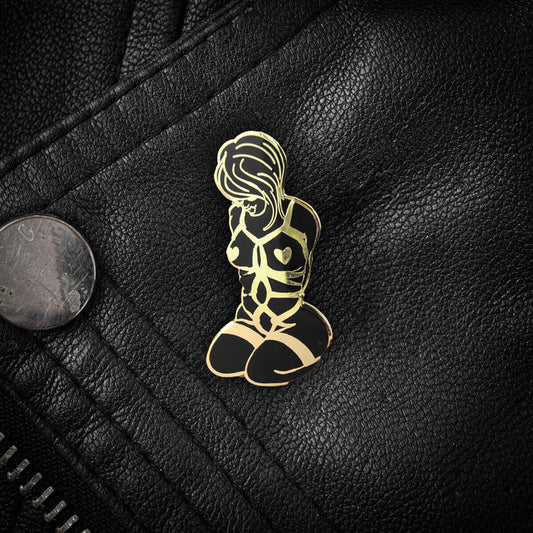
Who Wrote the Satanic Bible?
Share
The Satanic Bible is one of the most infamous and misunderstood books of the 20th century. Published in 1969, it has been labelled everything from a philosophical manifesto to a manual for rebellion and even a source of fear during the moral panic of the 1980s.
At the centre of it all is its author, Anton LaVey, a man as controversial as the text itself. Known for his theatrical flair and eccentric lifestyle, LaVey founded the Church of Satan in 1966 and became a cultural icon of modern Satanism. But who was Anton LaVey, and what led him to write The Satanic Bible? To understand the book’s significance, you need to understand the man behind the myth.

Matthew Vicenta, CC BY-SA 4.0, via Wikimedia Commons
Who was Anton LaVey?
Anton LaVey, born Howard Stanton Levey in 1930 in Chicago, was a larger-than-life figure with a flair for the dramatic. Raised in California, he developed a fascination with the strange and the macabre from a young age. His early life was shaped by a love of pulp fiction, horror films, and stories of rebels and anti-heroes.
LaVey’s eclectic career added to his mystique. He worked as a circus performer, playing the calliope and taming big cats, and later found work as a nightclub organist. These experiences exposed him to the "underbelly" of human nature - people’s desires, indulgences, and contradictions. He claimed that he saw the same men who spent their Saturday nights at burlesque shows in church pews on Sunday morning, asking for forgiveness. For LaVey, this hypocrisy was proof that traditional religion often worked against human nature rather than with it.
By the mid-1960s, LaVey had become well-known in San Francisco for his “Friday night lectures,” where he discussed topics like the occult, crime, and the supernatural. His gatherings grew into a community, and in 1966, he declared the founding of the Church of Satan - a religion not of devil-worship but of self-worship, celebrating individual strength and pleasure.
Three years later, in 1969, LaVey published The Satanic Bible to codify his beliefs into a definitive text. Unlike religious scriptures filled with divine commandments, LaVey’s book rejected the supernatural entirely. Instead, he presented Satan as a symbol of freedom, defiance, and human nature itself. The book became the cornerstone of modern Satanism and propelled LaVey into international notoriety.
LaVey cultivated an enigmatic persona, complete with a shaved head, black robes, and a pet lion. He was equally adored and criticised, with some claiming he was a genius provocateur and others accusing him of being a fraud who embellished his life story. However, love him or hate him, LaVey’s role as the author of The Satanic Bible cemented his place as the father of modern Satanism and a defining figure of counterculture history.
Publication and Content
The Satanic Bible was published in 1969 by Avon Books, a major publisher known for popular paperbacks. This mainstream release was unusual for a book associated with Satanism, but it helped propel the text into public consciousness. The book’s striking black cover and bold title immediately drew attention, while its contents challenged conventional religious and moral ideas.
The text is divided into four sections, each with a distinct focus:
-
The Book of Satan
This section is a fiery rejection of Christian morality and traditional religious doctrines. It serves as a declaration of independence from guilt, shame, and repression. LaVey rails against religious hypocrisy, advocating for a life grounded in pride, indulgence, and personal responsibility rather than self-denial. -
The Book of Lucifer
Named after the figure associated with enlightenment and rebellion, this is the philosophical heart of The Satanic Bible. It contains essays on topics such as human nature, power dynamics, and rational self-interest. LaVey argues that humans should embrace their instincts, seek pleasure without guilt, and reject outdated moral systems that deny the realities of human behaviour. He promoted the idea that altruism is often a facade and that self-interest, when approached honestly, leads to more authentic living. -
The Book of Belial
This section introduces the concept of ritual in LaVeyan Satanism. Unlike religious ceremonies meant to appease a god, these rituals are psychological tools designed to help individuals focus their emotions, release frustrations, and strengthen their resolve. LaVey described them as theatrical performances for personal empowerment rather than supernatural acts. -
The Book of Leviathan
The final section delves into the language of ritual and symbolic invocations. It features chants and incantations that are meant to evoke strong emotional responses. LaVey viewed these as a way to channel desires and intentions into action, not as magical spells but as tools of self-expression and catharsis.
Throughout The Satanic Bible, LaVey presents Satan as a metaphor rather than a deity - a representation of rebellion, indulgence, and personal freedom. He borrowed heavily from literature, philosophy, and even early 20th-century occult texts to build a framework that felt both provocative and grounded in reason.
The book also emphasises the importance of self-control, personal boundaries, and respect for others' autonomy. Despite its provocative language, LaVey was clear that Satanism does not endorse harm or exploitation. He dismissed the idea of "turning the other cheek" but firmly opposed senseless violence or abuse.

Photo by Anton Massalov
What has the Satanic Bible influenced?
Since its publication, The Satanic Bible has left a lasting impact on culture, religion, and countercultural movements. It laid the foundation for modern Satanism and positioned Anton LaVey as a figurehead of a philosophical movement that rejected religious dogma in favour of personal autonomy.
The book's influence became particularly visible in the 1970s and 1980s, when it gained a devoted following among those disillusioned with organised religion. It resonated with outsiders, artists, and free thinkers who were drawn to its unapologetic embrace of individualism. During this period, musicians in the metal, goth, and punk scenes often cited The Satanic Bible as a key influence. Bands such as Slayer, Black Sabbath, and later Marilyn Manson borrowed from its imagery, adding to the book’s association with rebellion and anti-authoritarianism.
However, The Satanic Bible also became a symbol of fear during the 1980s and 1990s "Satanic Panic" in the United States and the UK. This moral panic was fuelled by sensationalist media reports, conspiracy theories, and accusations that Satanic cults were committing ritual crimes - claims that have since been widely debunked. Despite having no connection to criminal activity, The Satanic Bible was often cited as evidence of Satanic influence and used to justify persecution against people who deviated from traditional religious norms.
LaVey’s work also sparked numerous misconceptions. Many believed the book was a guide to worshipping the devil or practising black magic. In reality, the text presents an atheistic philosophy that rejects the supernatural entirely. The rituals described in the book are intended as symbolic expressions of emotion, not attempts to summon demonic forces.
Despite the backlash, The Satanic Bible has remained in print for over five decades and has sold millions of copies worldwide. It continues to be a significant point of reference in discussions about religious freedom, individuality, and secularism. The book’s message of self-reliance, indulgence without guilt, and rebellion against imposed moral standards still resonates, particularly with those who feel alienated by mainstream religious teachings.
In popular culture, the book's legacy persists. References to its themes appear in everything from films and TV series to fashion and memes. Its impact is also visible in the broader acceptance of secular and non-religious philosophies, particularly in Western societies where organised religion is increasingly questioned.
For many, The Satanic Bible represents more than just a book - it symbolises a rejection of conformity and a celebration of human freedom. Whether viewed as a groundbreaking manifesto or a controversial text, its cultural legacy is undeniable.
Why It Still Matters
More than 50 years after its publication, The Satanic Bible remains a significant cultural and philosophical touchstone. In an era where individualism and secularism are increasingly part of mainstream discussions, the book’s central message - that humans should live authentically, free from guilt imposed by outdated moral frameworks - still resonates with many.
The text has become a symbol of rebellion against authoritarianism and moral dogma, particularly for those who feel alienated by traditional religious teachings. For people who value personal freedom, The Satanic Bible represents a declaration of independence, rejecting the notion that spirituality must be tied to self-denial or supernatural beliefs.
The book’s relevance has also persisted due to ongoing debates about religious freedom and public expression. Discussions about the role of religion in public life - whether concerning reproductive rights, education, or government policy - echo many of the critiques LaVey presented in his essays. The rise of non-religious identities in Western societies has further positioned The Satanic Bible as a key text for those seeking philosophical alternatives to mainstream religions.
In subcultures such as goth, punk, and metal, the influence of The Satanic Bible can still be seen in music, fashion, and art. Its themes of self-determination, rebellion, and empowerment continue to inspire creativity and self-expression. What was once considered niche or controversial has become part of broader cultural discussions about authenticity, belief, and identity.
However, the book’s endurance isn’t just about its content - it’s also about the conversations it provokes. The Satanic Bible forces readers to confront their own assumptions about morality, religion, and authority. Whether people agree with LaVey’s philosophy or not, the text challenges them to consider where their beliefs come from and whether those beliefs truly align with their values.
For supporters, the appeal of The Satanic Bible lies in its unapologetic stance on living life fully and honestly. For critics, its bold claims continue to spark debate. Either way, the book’s cultural legacy is undeniable. In a world where ideas about faith, freedom, and self-expression are constantly evolving, The Satanic Bible remains a provocative reminder that challenging the status quo often starts with questioning the rules we've been told to follow.













